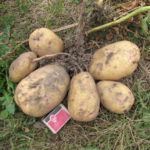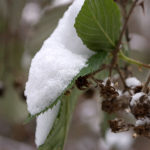Spirea: planting and care. Trimming the spirea.
From May to August, beautiful shrubs bloom in the gardens with white, pink and purple flowers. During flowering, the leaves of the plants are not visible behind the flowers. The flowers of the spirea are collected in lush inflorescences, and the entire shrub, especially if it blooms in white, looks like a bride on her wedding day. Just a lovely sight! And so every year!
And most importantly, this plant is unpretentious and resistant to many adverse conditions. Therefore, it is planted quite often. Spireas are frequent "residents" of city streets and courtyards. And on a personal plot, they add beauty, joy and desire to live.
Spireas are perennial shrubs that belong to the Rosaceae family. They are relatives of some of our favorite fruits, as well as rowan and hawthorn.
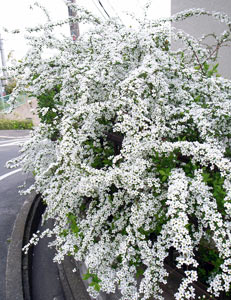
Spirea has another name - meadowsweet. But you should not confuse it with other species from the same family - Vyazolevaya meadowsweet and Common meadowsweet, which grow in the wild, have very similar flowers and inflorescences, but are herbaceous plants. Herbaceous meadowsweet also have another specific name - meadowsweet.
There are quite a few spirales - about 90 species, there are also various varieties that differ in the color of the petals, the shape of the inflorescences, the color and shape of the leaves, the flowering period
Depending on the flowering time, spireas are spring-flowering and summer-flowering. In spring-flowering plants, last year's shoots usually bloom with white flowers. In the summer-flowering (late-flowering) spirea, pink, crimson and red flowers are formed on the shoots that have grown in the current year.
Spireas are famous for their beauty and unpretentiousness. Growing them is not difficult.
Planting spirea
Spireas love sunny areas, they are photophilous. They prefer sod or leafy soil with the addition of peat and sand in a ratio of 2: 1: 1. In rich soils, plants grow more lush. The optimal soil pH for spirea is 6 - 7.
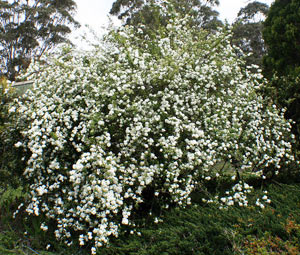
The best month for planting spirea is September. Cloudy or even rainy weather is suitable for planting shrubs. A hole is dug for the seedling, the width of which should exceed the size of the earthen coma by about 25 - 30%. Planting depth is 40 - 50 cm. The root collar should be at ground level. Drainage from sand and broken brick is placed at the bottom of the pit, rubble can be used (layer thickness 10 - 20 cm). Drainage is especially necessary if groundwater is close to the ground.
If shrubs are planted in a row, then the distance between them in a row should be 0.4 - 0.5 m, and the row spacing, if they are planted in groups, - 0.5 - 0.7 m, less often about a meter.
Spirea care
In early spring, the planted bushes are fed with fertilizer "Kemira-universal" at the rate of about 100 - 120 grams per 1 sq. meter.
Watering spireas need moderate. In dry seasons, as well as after pruning, they are watered twice a month, 1 bucket of water is poured under each plant. If the plants are young, in dry times they need more abundant and frequent watering.
As a care in young plantings, the soil is loosened if it becomes compacted from watering, as well as when weeding. After planting, mulching is also carried out with a layer of peat of 7 cm.
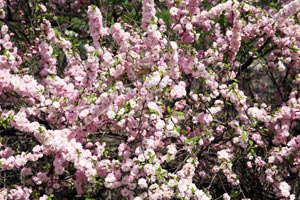
All spireas tolerate a haircut well. But the method of pruning them depends on the type of shoots on which the inflorescences are formed, on what year they are. Depending on the place of formation of flower buds, spireas are divided into two groups.
The group of early flowering spireas (bloom in May - early June) includes sharp-toothed spireas, Vangutta, Nippon, oak-leaved and medium. Flower buds are formed along the entire length of last year's shoots, therefore, these spireas cannot be cut off every year, since flower buds will be removed, which means that the plant will not bloom in the year of pruning.
To reduce the size of the bush, to improve tillering, the plants are only slightly shortened by the shoots. This group of species usually forms numerous tillering shoots. And pruning comes down to the fact that the old 7 - 14-year-old shoots are removed, and the tips of the shoots that are frozen are also cut off.
Shrubs are heavily pruned if rejuvenation is required. In this case, the entire bush is cut off, leaving only a stump. This gives an impetus to the active and strong development of the shoots from the dormant buds located near the root collar. Then a shrub is formed from the new growth, leaving about 5 - 6 of the strongest shoots, and the rest are removed already in their first growing season.
Once every 1 - 2 years, spirea shrubs thin out, removing weak and old shoots. To form a bush, pruning is usually done in early spring (March-April), and sanitary pruning can be done in summer.
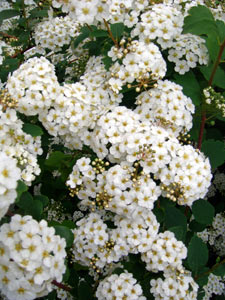
The second group of late flowering species (bloom in July - August) includes spireas of Bumald, Billiard, Douglas, Japanese, birch, willow, white and white-flowered. In these species, inflorescences usually grow at the ends of the shoots that have grown in the current year. Therefore, they must be pruned every year in early spring, during the period when the plants begin to awaken. Shoots are pruned to well-developed buds. Small shoots are completely removed. The stronger the pruning, the more powerful the shoots are then formed.
It is also necessary to remove aging shoots, otherwise, starting from the fourth year of growth, their tops tilt to the ground and dry out. The entire stem usually lives for 6 - 7 years, but due to the formation of root shoots, this plant is durable. After the 4th year, the top can be pruned annually at a height of about 30 cm from the ground. Periodically, the bushes are cut, leaving only the stump. In the summer, the inflorescences are removed from the bush as they bloom so that they are not depleted during the formation of seeds.
Summer-flowering spireas are less durable than spring-flowering ones. If even after pruning shrubs develop weak shoots and flowering worsens, then it is better to replace them with younger ones. Replacement for this group of spirits should be done after 15 - 20 years.
After pruning the shrubs in early spring, the soil is fertilized, and somewhere in mid-June, the plants themselves are fed. Fertilizers for this are prepared as follows: 1 bucket of fresh slurry is mixed with 5 - 6 buckets of water. Then 5-10 g of superphosphate is added to a bucket of this solution. Trunk circles, to avoid the appearance of weeds, are mulched with small shavings or semi-rotten foliage, a layer of mulch is 6 - 8 cm.
They also make sure that the plants are not exposed to pests.
Be sure to plant spireas on your site near the house, and they will delight you with their beauty for more than a year.

